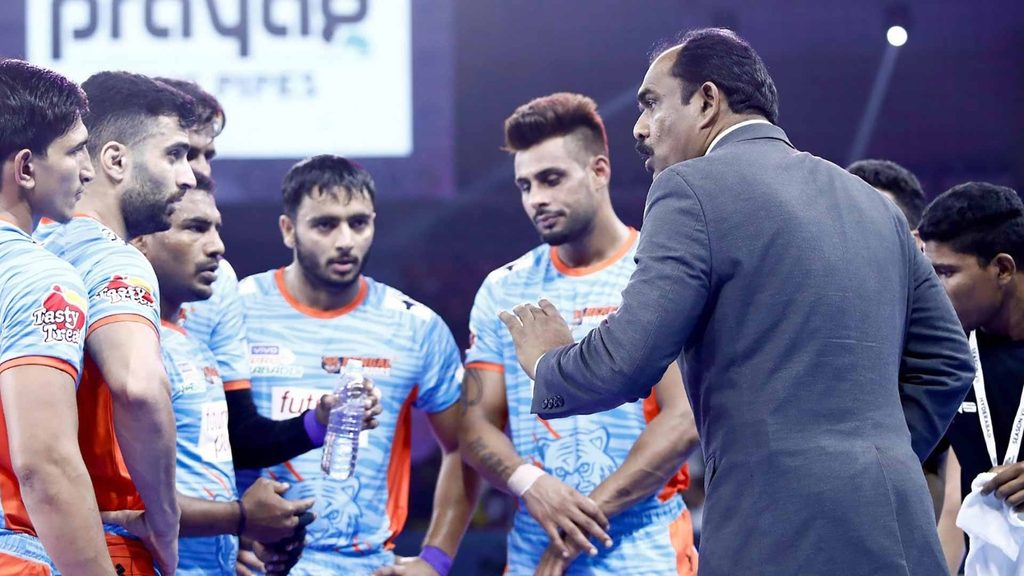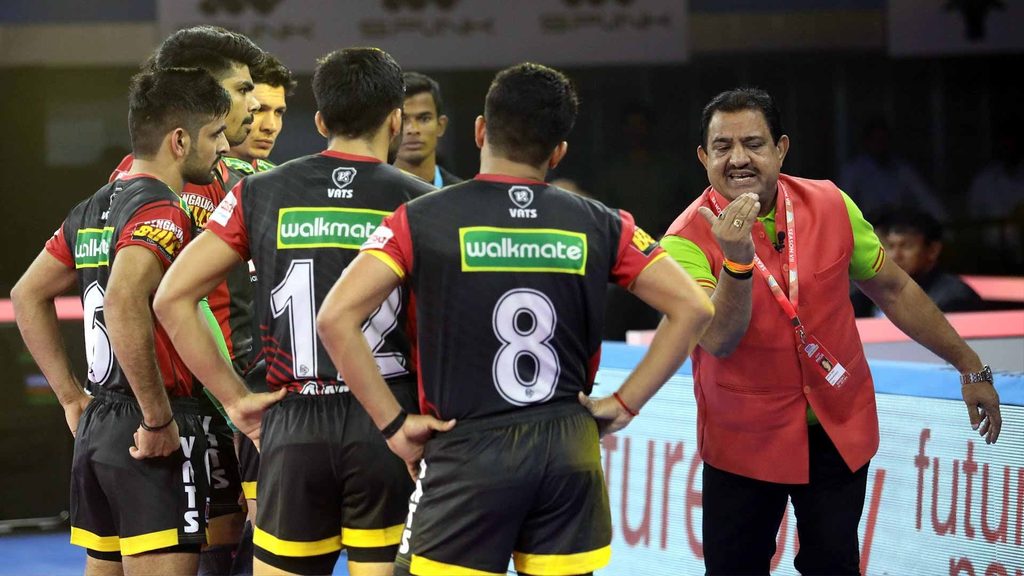Video analysis and specialist staff: How the kabaddi coach's role has evolved


"Earlier, we would only explain a strategy based on drawings we did on a board," Bengal Warriors coach BC Ramesh reflects at simpler times in vivo Pro Kabaddi.
"Many players were unable to understand their mistakes since they couldn't remember every moment of the game. Some of them would even refuse to accept their errors.
"But today video instructions provides more evidence than a coach's word, which eventually has made the players more accountable and reliant on technology."
That’s just one example of how the sport of kabaddi has seen a massive overhaul in the past few years with vivo Pro Kabaddi at the forefront of it all. Along with the dissemination of the coach’s duties among specialists, this radical advancement is spearheaded by video analysis, arming the coaches with visual references to improve gameplay and player performances.
The advent of video analysis
In the first season of vivo Pro Kabaddi, only basic strategies were implemented as the game established itself and the coach used his own experience to guide players. Not anymore, though.
"Video instructions were unavailable at that time. Now all the teams have gained access to video footage," Ramesh points out. "Coaches now provide more learnings about the sport. We improvise strategies and tactics while understanding what role suits which player best. Recruiting players in that regard has become easy for us as well."
While coaches now balance more of a mentoring role for the youngsters with the role of a strategist, the aid of video technology has made it much easier for them to pin-point the exact strengths of the opponents and areas of improvements for their team.

Extension of the coaching staff
The expansion in the coaching staff has also freed up time for coaches to work on building up the morale of young players and work on keeping the players motivated.
"Earlier, kabaddi coaching was very different and more exhausting because the coach was the go-to person when it came to understanding match analysis or even physical training. That would take a toll on us," remembers Ramesh.
"Now we have experts who only focus on the duties they have come to execute. We, as a team of coaches, video analysts and physical trainers can easily plan out schedules to improve the team's tactics and that provides us with a lot of flexibility."
With the introduction of physical trainers, players have made huge strides from standardised drills they used to follow at the training camps.
"If we do not follow their guidelines, aspects of physical fitness and diets could go sideways, resulting in a decrease in the players' and eventually the team's strength," Ramesh warns.
It has also allowed them to work with the players on the finer aspects of the game such as raiding in specific situations, for instance with 4-5 defenders on the mat or working with defenders to tackle with only one or two others for support.
"I now have a separate regime on how to read the players' positions and what to do according to that situation," Bengaluru Bulls' coach Randhir Singh Sehrawat says.
While video analysis has opened up another avenue to refine the game, the expanded staff has allowed coaches more time to polish the finer points. Now, no move or moment is left unanalyzed and no stone is left unturned in ensuring players are kept in peak physical conditions. The common link between the two, however, remains the coach.
Related tags:
Latest Updates
- © Pro Kabaddi
- Terms & Conditions
- Privacy Policy
- Cookie Policy
Powered by: Sportz Interactive
